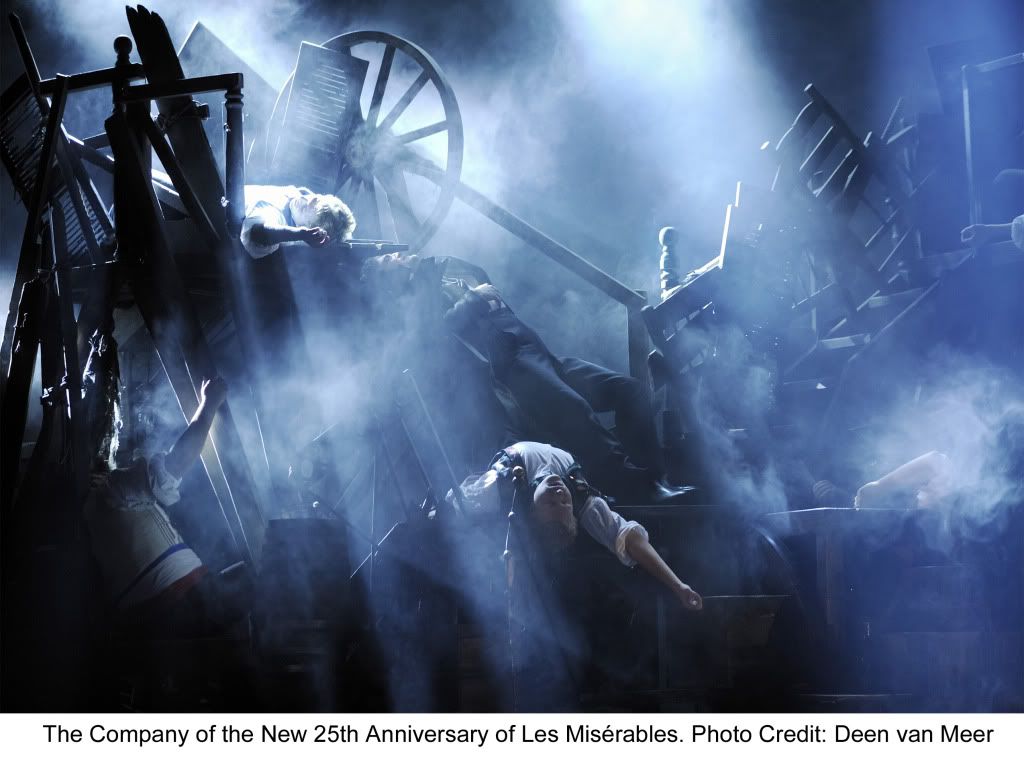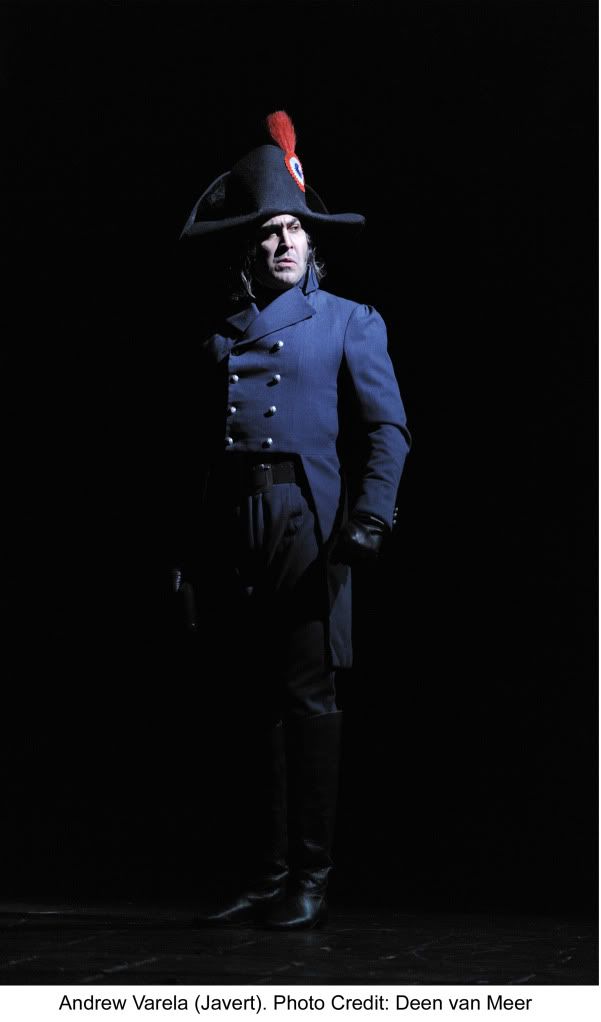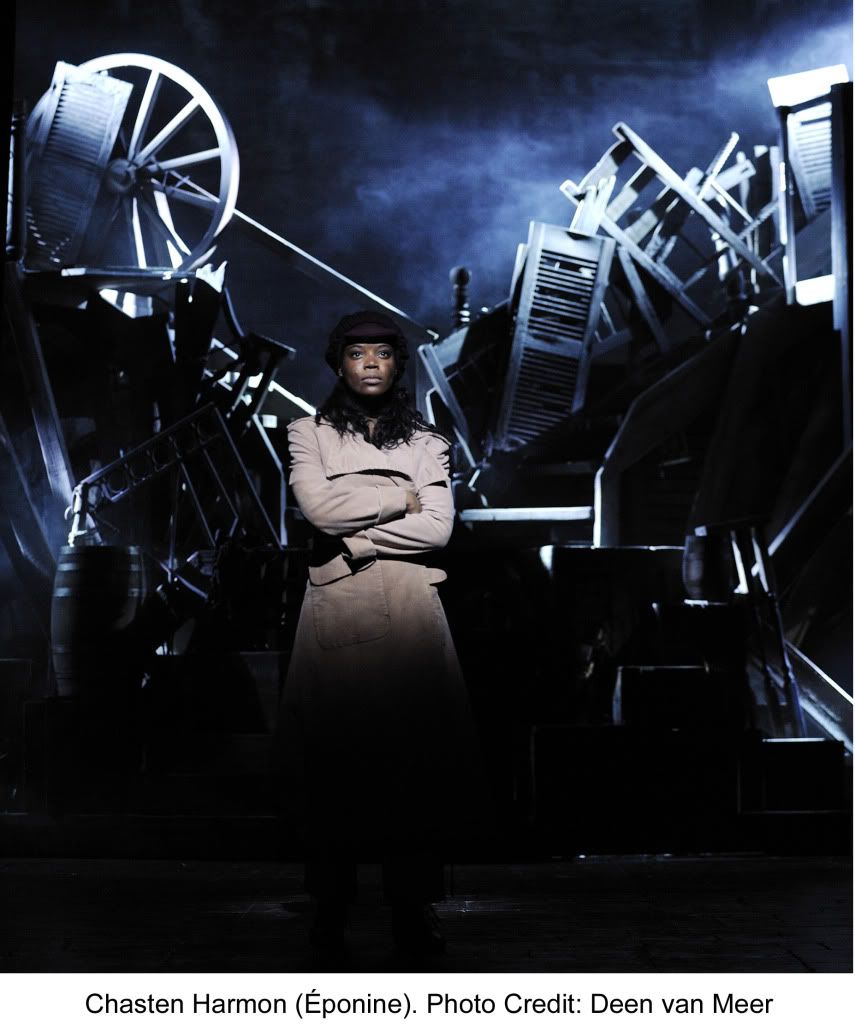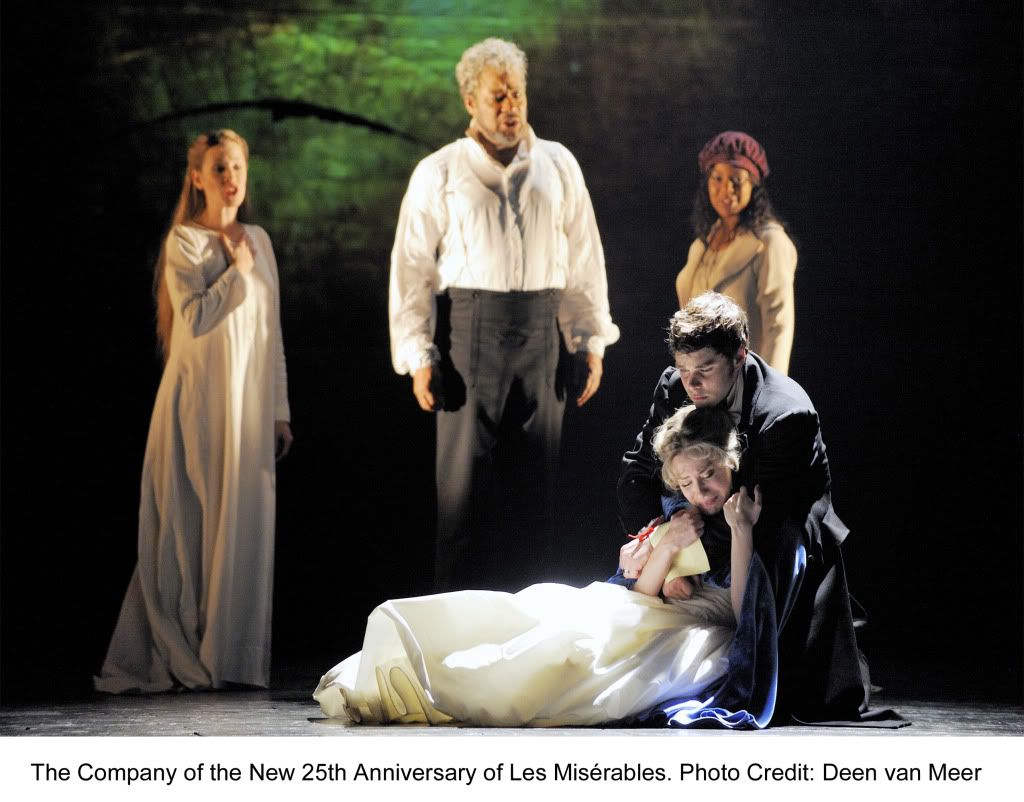
Neither the sweeping, bitter winds that tore through the streets nor the mountains of snow that overtook our fair city could keep me from joining the crusade at the Cadillac Palace Theatre for the New 25th Anniversary Production of Les Misérables. Although my fifth time seeing the world-famous operetta, the power of the story and beauty of the music were by no means dulled. In fact, with the many new elements this production entailed in addition to my four-year Les Mis withdrawal, you could even say they were heightened.
Not only is this Les Mis's first US tour in four years, but it's also the first time the show has been entirely reimagined. Nothing to worry about, though; you won't find Jean Valjean in blue jeans or Inspector Javert wielding a .44 magnum. The changes that were made, although undoubtedly meant to update the show, left the story untouched while altering instead the scenery and overall pace of the show. The original Les Mis tour was known for its revolving stage, simplistic indicators of setting, and enormous barricade sets that swung in from either side of the stage; the title stood projected onto a screen as the overture played, and the stage was generally sparse, the attention focused on the actors and music.
though; you won't find Jean Valjean in blue jeans or Inspector Javert wielding a .44 magnum. The changes that were made, although undoubtedly meant to update the show, left the story untouched while altering instead the scenery and overall pace of the show. The original Les Mis tour was known for its revolving stage, simplistic indicators of setting, and enormous barricade sets that swung in from either side of the stage; the title stood projected onto a screen as the overture played, and the stage was generally sparse, the attention focused on the actors and music.
The 25th Anniversary Production, however, elaborated on some of these elements while cutting others out completely. First off, no revolving stage. (The one thing I truly missed.) Second, the backgrounds throughout the show comprised of images taken from Victor Hugo's paintings, all dark and dreary, which worked well to set the tone and establish the 19th century time period and French environs. The sets themselves were more numerous and complex, with many pieces frequently being wheeled on and off stage, as were the props. Comparing the two productions, the stage of this newer version seemed generally more cluttered and full, possibly to provide more visual stimulation. The overture played to a projected image of a desolate night sky rather than the title; it was only after the first fifteen minutes of the show when Valjean tears up his incriminating yellow parole sheet that "Les Miserables", in a new font, was projected onto the scrim as the mini-overture to the next song spilled out from the orchestra pit, all to much applause. This seemed very cinematic, the same way many films hold their titles until something of signficance happens to set up the story.
 And the music -- oh, God, the music. Just as lovely and gorgeous as ever. Before singling out my favorite actors and singers from this production, I'd like to first pay a well-deserved compliment to the entire cast, and that is that they were exceptionally articulate. This is especially hard to come by in choral-heavy shows because more often than not when thirty or forty people sing together it's difficult to pick out all the words. This cast made sure to "kuh!" the Ks, "guh!" the Gs, and "tuh!" the Ts -- immensely helpful for those of us who don't want those poetic lyrics drowned out, as well as for those who have never seen the show and may have a hard enough time figuring out what's going on without the lyrics being unintelligible.
And the music -- oh, God, the music. Just as lovely and gorgeous as ever. Before singling out my favorite actors and singers from this production, I'd like to first pay a well-deserved compliment to the entire cast, and that is that they were exceptionally articulate. This is especially hard to come by in choral-heavy shows because more often than not when thirty or forty people sing together it's difficult to pick out all the words. This cast made sure to "kuh!" the Ks, "guh!" the Gs, and "tuh!" the Ts -- immensely helpful for those of us who don't want those poetic lyrics drowned out, as well as for those who have never seen the show and may have a hard enough time figuring out what's going on without the lyrics being unintelligible.
As for who stole the show, in my humble opinion, I'll have to start with the ladies, the lovely, lovely Eponine and Fantine, played by Chasten Harmon and Betsy Morgan, respectively. These women knew how to belt, and belt they did during the only two full-length female soliloquies -- "I Dreamed a Dream" and "On My Own" -- of the whole show. Justin Scott Brown (from the first Spring Awakening tour) played a charming Marius, with a perfectly even, professional-sounding voice to fit the part. Andrew Varela was a sinisterly foreboding Javert, his deep bass vibrato enough to send chills down your spine. And Valjean, played by Lawrence Clayton, was, despite the myraid alterations to the set, to me the biggest surprise of the show; frankly, I was suprised to see a black Jean Valjean. At first, I felt this was some sort of statement, considering Valjean's unfair persecution at the start of the show, but by the middle of Act One it wasn't something that stuck out to me anymore; with Clayton's strong, tenor voice and a gentle yet world-weary mien, he was just Jean Valjean.

Whether these changes and new additions are improvements, I cannot say, for it truly depends on each individual's taste. For me, I don't mind either way as long as the music stays the same. I wept and felt my soul swelling at the same lines of gorgeously-paired lyrics and music as I always do. I found each character compelling and complex, as I always have. The music speaks for itself. The story speaks for itself. Different sets may move around the actors, different voices may glide over the notes of the music and curl around the words of the lyrics, but if this revamped production proves anything, it's that the students will always be revolutionizing, the Thénardiers will always be conniving, Eponine will always be suffering unrequited love, Gavroche will always be patrolling the Parisian slums, and Javert will always be hunting Valjean. In 1985 and in 2011, that's Les Misérables.











